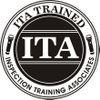Wood Destroying Organisms
This report includes a structural pest inspection embedded within the report. All observations in this report that begin with WDO are a part of a WA State Pest Inspection. Orca Inspection Services LLC employs Dylan Chalk, Licensed Structural Pest Inspector ##65540. Please note that most WDO observations are related to high moisture conditions that could be conducive to mold-like substances. Orca Inspection Services LLC is not a mold specialist and recommends consulting with an industrial hygienist or other mold remediation expert if concerned about mold or indoor air quality.Pest Inspection Standards in Washington State - WAC 16-228-2045 - REQUIRES THAT A DIAGRAM / DRAWING BE PREPARED FOR WOOD DESTROYING ORGANISM (WDO) REPORTS. IF THE PHOTOS AND DESCRIPTIONS IN THIS REPORT ARE INADEQUATE, A DRAWING IS AVAILABLE UPON REQUEST.
Visible Evidence of Active Wood Destroying Insects None noted
Visible Evidence of Inactive Wood Destroying Insects None noted
Visible Evidence of Damage from Wood Destroying Insects None noted
Visible Evidence of Active Wood Decay and Fungi Present, See WDO Comments in this report
Visible Evidence of Conditions Conducive to Wood Destroying Organisms Present, See WDO observations in this report
Summary
Major Concerns
- EG-7 Exterior/Garage:
Overall, this is an old entry porch. Numerous repairs are needed to this porch to ensure safe and reliable performance. I recommend additional inspection and repair of this porch by a qualified general contractor. Examples of observations and defects noted during inspection include:
- The guardrail does not meet minimum modern safety standards: it is too low.
- The guardrail openings are larger than the 4-inches recommended today. This can pose a safety hazard for small children.
- The wall outside the stairs is leaning and likely has concealed water damage.
- The exterior finishes of this entry porch are not adequately shedding water.
- There is not much of a footing system and there is wood to soil contact - conducive to wood decay
- Temporary repairs have been made below the porch, but they are pretty humble
- EG-9 Exterior/Garage:
This house has two masonry chimneys, one for the furnace flue and one for the fireplace. They are both is poor condition and on the verge of failure. I recommend additional inspection and repair of these chimneys. I would consider removal of the flue chimney when updating to a different heating system (heat pump or direct vent furnace) and then repair the fireplace chimney as recommended. Please note this large fireplace chimney has inadequate support and if you are using a direct vent fireplace, you could take it down below the roofline.
- RA-1 Roof/Attic:
This roof is done in a three tab composition shingle. The roof looks to be well past its reliable service life. Roof replacement is recommended to ensure reliable roof performance. Hire a qualified roofing contractor to further evaluate and replace this roof. Examples of specific observations noted during inspection include:
- Granule loss on the shingles makes them vulnerable to UV damage
- Shingles are loose and not bonding well and vulnerable to wind damage - several shingles have already blown off
- A hole was noted at the ridge, east side.
- Moss build-up on roof requires a treatment.
- One of the roof jack flashings in cracked.
- The flue chimney is missing counter-flashings
- FB-2 Family Bathroom:
Loose tile were noted in the shower surround as well as localized failing grout and caulking. This indicates water is getting behind the tile and causing damage. I would expect concealed water damage behind this tile. Renovation is needed in this bathroom. This would also be the time to update this old window which is no closing correctly.
Repairs
- G-1 Grounds:
Eliminate wood /soil contact to reduce the chances for rot and pest damage and repair any hidden rot as needed - see southwest corner. Generally, a 6-inch clearance between soils and wood is recommended. This is often not realistic on older homes, but repairs should be made to get as much clearance as is possible and all contact with the soils should be eliminated.
- G-4 Grounds:
All trees, branches and vegetation should be pruned at least six feet away from the building to eliminate a condition conducive to wood destroying organisms and a path for rodent entry.
- G-6 Grounds:
Mild wood decay was noted at the old back stairs. In addition, these are steep steps with short treads. Updating is recommended.
- EG-10 Exterior/Garage:
This property has an old bunker style concrete garage on the street. This looks too small to park inside of. Vegetation has started to grow over the garage. I recommend cutting vegetation back and being sure to eliminate and wood to soils contact.
- RA-5 Roof/Attic:
The attic and roof cavity ventilation look to be inadequate - see no lower intake ventilation. Standards recommend open ventilation levels in a ratio of 1 to 150 of the attic area. During re-roofing, I recommend having a roofing company evaluate the level of ventilation on this roof and improve with ridge, soffit, core or other vents as recommended. Additional ventilation will likely be recommended by a roofing contractor when re-roofing.
- P-11 Plumbing:
Corrosion was noted on the supply connectors on top of the house water heater. This is an old water heater. Consider updating the water heater soon as it may not be worth correcting these older corroded connectors and keeping this old tank.
- LAP-4 Laundry and Additional Plumbing:
The waste plumbing below the laundry sink is leaking and requires repair. Hire a licensed plumber to further evaluate and repair. Please also note the way the sink is backing up during clothes washer discharge; improving this seems logical.
- HCFV-5 Heating, Cooling, Fireplaces and Ventilation:
The basement bath fan is disconnected in the basement.
- I-4 Interior:
Cracking plaster was noted inside around the flue for the chimney. I would consider removal of this chimney and note there is a risk of water damage around the chimney. Water could be coming from vapor in the products of combustion or from rain at the exterior.
- K-1 Kitchen:
The kitchen has no provisions for ventilation. An exhaust fan that ducts to the exterior is required at least somewhere in the kitchen. Lack of ventilation to the exterior is a potential safety hazard and will be inconvenient with cooking odors. Update during renovations.
- FB-6 Family Bathroom:
Mold-like substances were noted in the family bathroom walls and ceiling. Clean and seal all mold-like substances with cleaners and stain-killing paints as needed. Please note that mold and mold testing is beyond the scope of this inspection. Localized mold growth is common in bathrooms where building materials stay damp. Shellac-based stain-killing paints can be effective sealers. Finish paints should be glossy to low-sheen paint to better shed water and allow for cleaning. Using bath fans to exhaust moist air is important to prevent mold growth and fans can be places on timers so they run . Mold specialists can be hired as desired to further investigate these stains and remediate. Mold remediation companies are often expensive and it can be more cost-effective to exhaust simple painting, sealing, cleaning and ventilation repairs prior to retaining specialists for such a localized water problem.
- BB-1 Basement Bathroom:
Leaks were noted at the angle stop below the basement bathroom sink. Have this evaluated and repaired by a plumber.
Improves
- LAP-1 Laundry and Additional Plumbing:
A moisture alarm with water shut-off features is recommended under the washing machine to protect against accidental leaks in the supply hoses. Pans can be effective when there is a drain, but even these will not protect against a burst supply connector. A moisture alarm with automatic shut-off will. Watts is a brand I have seen installed: http://www.watts.com/pages/learnAbout/intelliflow.asp?catId
- FB-3 Family Bathroom:
Install new ventilation for the bathrooms during renovation work.
Due Diligences
- P-12 Plumbing:
Signs of prior leaks were noted at the water heater - see water stains. These areas were dry at the time of inspection. This is just another good reason to update this water heater.




